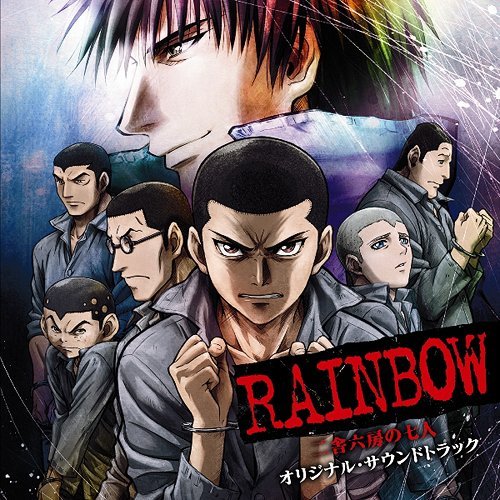STOP Saying The Marauders Are Like The Raven Boys. You Are WRONG. Ronan Lynch Is An Eldritch Horror And
STOP saying the marauders are like the raven boys. you are WRONG. ronan lynch is an eldritch horror and sirius black is what? a twink?
More Posts from Lrs35 and Others
The Two Types of Pacing
Pacing is a tricky, tricky thing. Hopefully, by breaking it down into two schools of thought, we can better our understanding of maintaining effective pacing.
as requested by @whisperinghallwaysofmirrors
First, Some Definitions
According to Writer’s Digest, narrative pacing is “a tool that controls the speed and rhythm at which a story is told… [H]ow fast or slow events in a piece unfold and how much time elapses in a scene or story.“
Pacing can be a lot of things. Slow, fast, suspenseful, meandering, boring, exciting, et cetera et cetera. While we don’t want meandering or boring, getting it to be the other things can be a feat.
As I go through all of this, I would like to say that the number one thing you should be keeping in mind with the pacing of your story is the purpose.
What is the purpose of this story, scene, dialogue, action, arc, plot point, chapter, et al? This and only this will keep you on track the whole way through.
Without further ado, here are the two types of pacing…
Micro Pacing
This, to me, is the harder of the two. Macro pacing usually comes naturally with our understanding of overall story structure that we see in books and movies. Micro is much more subjective and labor-intensive.
The first step of every scene you write is to identify what kind of pacing it needs to be effective. Is a slower pace going to nail in the emotional tone? Is a faster pace going to convey how urgent the scene is? Is choppy going to show how chaotic it is? How much attention to detail is needed? Et cetera. And even with the scene’s tone, there are also tones within with action, dialogue, and narrator perception.
There is no one-size-fits-all trick to mastering pacing. All you can do is try to keep it in mind as you draft. Don’t let it consume you, though. Just get it down. After drafting, look at the pacing with a critical eye. Do important scenes go too fast? Are unnecessary things being dragged out? Is this scene too detailed to be suspenseful?
A lot of errors in pacing are quick fixes. The adding or removal of details, shortening or lengthening of sentences, changing descriptions. However, these quick fixes do take a while when you have to look at every single scene in a story.
Macro Pacing
Rather than the contents of a scene, this deals with everything larger. Scenes, chapters, plot points, storylines, subplots, and arcs. This is taking a look at how they all work for each other when pieced together.
One of the biggest resources when it comes to analyzing macro pacing is story structure philosophy. The common examples are Freytag’s Pyramid, the 3-Act Structure, Hero’s Journey, and Blake Snyder’s 15 Beats. They follow the traditional story structure. Exposition, catalyst, rising action, climax, and resolution (albeit each in different terms and specificity). Though some see it as “cookie-cutter”, 99% of effective stories follow these formats at a considerable capacity. It’s not always about how the story is told, but rather who tells it. But I digress.
Looking at these structures, we can begin to see how the tried-and-true set-up is centered around effective pacing.
The beginning, where everything is set up, is slower but short and sweet. The catalyst happens early and our MC is sent out on a journey or quest whether they like it or not. The trek to a climax is a tricky stage for maintaining effective pacing. Good stories fluctuate between fast and slow. There is enough to keep it exciting, but we’re given breaks to stop and examine the finer details like theme, characterization, and arcs.
The edge before the climax is typically when the action keeps coming and we’re no longer given breaks. The suspense grabs us and doesn’t let go. This is the suspense that effectively amounts to the crescendo and leads to the emotional payoff and release that follows in the resolution. The resolution is nothing BUT a break, or a breather if you will. Though it is slower like the exposition, it is longer than that because this is where we wrap everything up for total closure. This is what the reader needs, rather than what they want. So you can take your time.
Not every story has to follow this recipe step-by-step. Critically acclaimed movies such as Pulp Fiction, Frances Ha, and Inside Llewyn Davis* break the traditional structure. However, they still keep certain ingredients in it. Whether it be the concept of a climax, the idea of a journey, or the overall balance of tension and release.
If you’re struggling with the macro side of your story’s pacing, I would try to identify what the weakest areas are and see if applying these story structure concepts and methodology strengthens it at all. If not, it may be that your story idea doesn’t fit the “substance” requirement of an 80k+ word novel. It may need more or fewer subplots or an increase of conflict or more things getting in the MC’s way. You could also see if adapting it to a shorter medium (novella, et al) or a longer medium (series, episodics, et al) would alleviate the pacing issues.
*sorry all my references are movies and not books, but I’ve seen more movies than I’ve read books
In Short–
Pacing, both macro and micro, are incredibly subjective concepts. The only way to really find out how effective your story’s pacing is, is to look at it through the lens of traditional structures and ask for feedback from beta readers. How a reader,who doesn’t know the whole story like you do feels about pacing is the best resource you could have.





Pieces of Art that make me think of MWPP era characters - Remus Lupin edition
Fariha Róisín / Grzegorz Gwiazda / Clarice Lispector / Henrik Uldalen / Neil Hilborn
here is a twitter thread and constantly updating, currently active google doc that contains the gofundmes, paypals, cashapps, etc of victims of anti-asian hate crimes, asian-owned small businesses, and asians who need financial aid. please consider donating & boosting and adding more donation links if you have them.
Animes que recomiendo:
Steins Gate

Bungou stray dogs

boku dake ga inai machi

Yakusoku no Neverland

kimetsu no yaiba

Akatsuki no yona

Nana

Fruit basket 2001

Paradise kiss

Assassination classroom

Darling in the franxx

Banana Fish

Dororo

Ao haru ride

Shigatsu wa kimi no uso

Yuri on ice

Charlotte

Natsuyuki rendezvous

Anohana

Angel beats

Fullmetal alchemist brotherhood

Masamune-kun’s Revenge

Orange

Lovely complex

Naruto shippuden

Tokyo ghoul
temporada 1

Romeo and juliet

ReLIFE

Skip beat

Shingeki no kyojin

Ouran highschool host club

inu x boku ss

Devils line

Free

Nanatsu no taizai

Super lovers

Black clover

Black cat

Satsuriku no Tenshi

Violet evergarden

Rokudenashi majutsu koushi to akashic

Rainbow nisha rokubou no shichinin

Sakamichi no apollon

Kareshi Kanojo no Jijō

Psycho pass

Akame ga kill

Tate no Yūsha no Nariagari

Boku no hero academia

Hitorijime my hero

91 days

spiritpact

kamisama hajimemashita

Shokugeki no soma

Plastic Memories

Mushishi zoku shou

Danmachi

Zankyou no terror

despite all my saddened rage i am still just a girl in her room watching her silly little films, reading her silly little books, listening to her silly little playlists
the cruel choice between pdf (free) vs physical copy (annotatable)
you have to listen to loud music . it scares the evil creatures from your head

(by natalie moonbeam)
when sleater kinney said “they want to socialize you, they want to purify you” and when Le Tigre said “it’s okay to hate your job, after all it’s fucking wrong” and when kathy acker said “i'm sick of this society. "earn a living" as if I'm not yet living” and “i am nobody because i work/because i work i am nobody” and when mcr said “when i grow up i want to be nothing at all.” yeah…
-
 youcantkillamutant reblogged this · 3 months ago
youcantkillamutant reblogged this · 3 months ago -
 passionatedisdain liked this · 3 months ago
passionatedisdain liked this · 3 months ago -
 loafofryebread liked this · 3 months ago
loafofryebread liked this · 3 months ago -
 zeropointfortyseven liked this · 3 months ago
zeropointfortyseven liked this · 3 months ago -
 absentplatypus liked this · 4 months ago
absentplatypus liked this · 4 months ago -
 alexandria-burning liked this · 5 months ago
alexandria-burning liked this · 5 months ago -
 laurelless liked this · 5 months ago
laurelless liked this · 5 months ago -
 randomlyadded1 liked this · 5 months ago
randomlyadded1 liked this · 5 months ago -
 smallraccoon13 liked this · 7 months ago
smallraccoon13 liked this · 7 months ago -
 barely-know-her liked this · 8 months ago
barely-know-her liked this · 8 months ago -
 namjoonerr liked this · 9 months ago
namjoonerr liked this · 9 months ago -
 this-user-is-not-found liked this · 9 months ago
this-user-is-not-found liked this · 9 months ago -
 shayberri789 liked this · 9 months ago
shayberri789 liked this · 9 months ago -
 phoenix-kite liked this · 10 months ago
phoenix-kite liked this · 10 months ago -
 jarvvista liked this · 10 months ago
jarvvista liked this · 10 months ago -
 veryberrydraws liked this · 10 months ago
veryberrydraws liked this · 10 months ago -
 thefckisthat liked this · 10 months ago
thefckisthat liked this · 10 months ago -
 screwtheangels liked this · 11 months ago
screwtheangels liked this · 11 months ago -
 teddybomb reblogged this · 11 months ago
teddybomb reblogged this · 11 months ago -
 teddybomb liked this · 11 months ago
teddybomb liked this · 11 months ago -
 honey-fia liked this · 1 year ago
honey-fia liked this · 1 year ago -
 meteorsandstars liked this · 1 year ago
meteorsandstars liked this · 1 year ago -
 openonatrain liked this · 1 year ago
openonatrain liked this · 1 year ago -
 ungiornoidealeperipescibanana liked this · 1 year ago
ungiornoidealeperipescibanana liked this · 1 year ago -
 arecipeforfeels liked this · 1 year ago
arecipeforfeels liked this · 1 year ago -
 ablurofconquerors reblogged this · 1 year ago
ablurofconquerors reblogged this · 1 year ago -
 splendourinthegrass liked this · 1 year ago
splendourinthegrass liked this · 1 year ago -
 the-neil-jos10 liked this · 1 year ago
the-neil-jos10 liked this · 1 year ago -
 rudybalms liked this · 1 year ago
rudybalms liked this · 1 year ago -
 urmomsfavauthor reblogged this · 1 year ago
urmomsfavauthor reblogged this · 1 year ago -
 cryiling liked this · 1 year ago
cryiling liked this · 1 year ago -
 angels--twice--descending reblogged this · 1 year ago
angels--twice--descending reblogged this · 1 year ago -
 angels--twice--descending liked this · 1 year ago
angels--twice--descending liked this · 1 year ago -
 yuzuka-rei liked this · 1 year ago
yuzuka-rei liked this · 1 year ago -
 blackswanjikook5813 liked this · 1 year ago
blackswanjikook5813 liked this · 1 year ago -
 milkncheerios liked this · 1 year ago
milkncheerios liked this · 1 year ago -
 spooksboots liked this · 1 year ago
spooksboots liked this · 1 year ago -
 aspaceforaghost reblogged this · 1 year ago
aspaceforaghost reblogged this · 1 year ago -
 acalipyge reblogged this · 1 year ago
acalipyge reblogged this · 1 year ago -
 artyardvark liked this · 1 year ago
artyardvark liked this · 1 year ago -
 i-am-tired-13 liked this · 1 year ago
i-am-tired-13 liked this · 1 year ago -
 teapocolypse liked this · 1 year ago
teapocolypse liked this · 1 year ago -
 kirjaimellinen liked this · 1 year ago
kirjaimellinen liked this · 1 year ago -
 internallyscreaminghelp liked this · 1 year ago
internallyscreaminghelp liked this · 1 year ago -
 kalidoscopesss reblogged this · 1 year ago
kalidoscopesss reblogged this · 1 year ago -
 napoleonsucks liked this · 1 year ago
napoleonsucks liked this · 1 year ago






